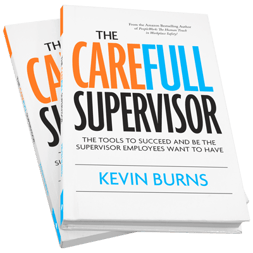Blame senior management’s perceived lack of commitment to safety, and you won’t get front-line crews to buy-in to the safety program.
 Gallup says that only 31.5% of North American workers are actively engaged in their work. That means 7 out of every ten people are not fully engaged in their work. This includes safety managers and front-line supervisors as well as senior management. But, as the survey points out, senior managers still engage in higher percentages than their employees. Still, these are a disturbing numbers.
Gallup says that only 31.5% of North American workers are actively engaged in their work. That means 7 out of every ten people are not fully engaged in their work. This includes safety managers and front-line supervisors as well as senior management. But, as the survey points out, senior managers still engage in higher percentages than their employees. Still, these are a disturbing numbers.
It’s easy to complain about how tough it is to be a safety person when senior managers are seemingly disengaged with safety. But it is tiresome that some safety people use senior management as a scapegoat.
“Until senior management improves their commitment to safety, our safety culture won’t improve,” you hear some safety people chime. So they give up trying to get over the hurdle. And that’s all it is; a hurdle. It’s not a closed road. It’s not a barricade. It’s something you have to either get over or go around. It's not insurmountable.
What The Numbers Mean
The perceived lack of management support also plays to the numbers above. If only 3 out of 10 safety people are actively engaged in their jobs (and the polling numbers say they are), then 7 out of 10 are looking for excuses and justifications for their lack of engagement. That gives rise to blame and finger-pointing.
It’s easy to criticize from the 30,000 foot view (the 4th most annoying business phrase) of an organization. You can complain that senior management needs to commit to safety in order to change the safety culture. But that just isn’t true.
There is no question that having senior management support would make culture change efforts easier. But it’s not necessary.
There are 3 reasons that blaming senior management can hurt your efforts to improve safety culture:
1A front-line safety supervisor doesn’t supervise everyone. A supervisor oversees a small crew of between 5 and 20 people. That’s it. Not 200 people - 5 to 20 people. Crew culture is what is in the control of the front-line supervisor. The front-line is where most incidents take place so it is the front-line where the culture needs to change. If you can successfully change the culture of one small crew, you move on to the next small crew and do the same thing there. Eventually, you will improve the front-line culture for most of the company - one small crew at a time. But continue to blame senior management’s perceived lack of commitment to safety, and you won’t get front-line crews to buy-in to the safety program. That will short-circuit safety culture improvement where it’s most needed. And it makes the job you were hired to do even tougher.
2Upper management does not create a company’s safety culture. Safety culture is the result of the unwritten code of “how we do things ‘round here.” That’s the culture. New safety programs, strategies and initiatives may be endorsed, sponsored and created by management. But they are not carried out by management. They are carried out at the front lines. The opinions of front-line employees, supervisors and safety management matter. Your opinion of senior management will determine the success or failure of anything that comes down from above. In other words, an existing culture will eat new initiatives for lunch. Especially, if the front-lines don’t think upper management is committed to safety. Add to that safety people who engage in and encourage blaming upper management only makes the improvement of safety culture worse.
3Safety is not a department. It is the foundation upon which all departments should function. Rules enforcers don't understand the business side of the company. The perception that senior management lacks a real commitment to safety might be true. But probably not. No senior manager wants to hurt or kill an employee. No senior manager wants to face stiff personal penalties or jail time. There is no exclusive domain for wanting people to be safe. The senior managers' role must look at the company-wide Big Picture - with safety being one part of that. What safety people may not be aware of are other projects in development that integrate with making the company a better and safer place to work. A manager's commitment to safety may simply not be evident to those inside of the "safety compartment."
Is senior management's lack of an open wallet perceived as a lack of commitment to safety? Is it by steamrolling over an overzealous rules enforcer that makes senior management seem uncommitted? Safety is not independent of operations. They coexist. Both want safe production as does senior management because a work stoppage is expensive.
 Productivity and engagement go up when blame goes down. Sports teams can still win championships without rousing endorsements from their senior management. So too can safety. Safety culture is improved at the front-line - not in the boardroom.
Productivity and engagement go up when blame goes down. Sports teams can still win championships without rousing endorsements from their senior management. So too can safety. Safety culture is improved at the front-line - not in the boardroom.
Kevin Burns is a management consultant, safety speaker and author of "The Perfect Safety Meeting" and his newest #1 Amazon Health & Safety Bestseller, "Running With Scissors - 10 Reasons To Invest in Safety In Slow Times." He is an expert in how to get through to people - how to talk with them so they hear and understand. Kevin's presentation "Trust The Process - Instill A Safety Attitude To Build An Engaged Culture Of Safety" will help your organization reach the following goals: better engagement and buy-in to safety, increased teamwork, better communication, lower turnover resulting in increased profits from production. Click here for more information and to discuss your needs with Kevin.



